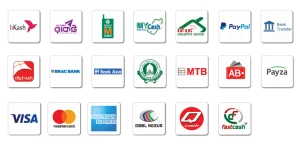What is a Spam? Who is a Spammer? Why Spamming Happens, and How Spamming Can Be Prevented?
Introduction
In the ever-evolving digital landscape, spam remains a pervasive issue, consistently evolving just as rapidly as the technologies designed to counter it. This comprehensive article will explore what spam is, identify the typical profiles of spammers, discuss the motivations behind spamming, and outline effective strategies for its prevention.
What is a Spam?
Spam refers to unsolicited digital messages sent in bulk, primarily via email, but also through other digital channels like social media and messaging platforms. These messages are often commercial in nature, but they can also involve scams, phishing attempts, or the spread of malware.
Who is a Spammer?
A spammer is typically an individual or group engaging in the creation and distribution of spam. These entities range from opportunistic individuals seeking quick profits to organized crime syndicates involved in more sinister scams.
Why Spamming Happens?
Spamming is driven by various motives, primarily:
- Economic Gain: Many spammers are in it for direct financial profit through the sale of products or services or indirectly via phishing or fraud.
- Malware Distribution: Some spammers aim to infect computers with malware to steal data or enlist them into botnets.
- Phishing: This involves tricking recipients into providing sensitive information like login credentials or financial information.
- Advertising: Both legitimate and illegitimate businesses may use spam as a low-cost advertising method.
How Spamming Can Be Prevented
Preventing spam requires a multi-faceted approach that involves both individual vigilance and organizational measures:
- Use Advanced Spam Filters: Implement robust spam filtering solutions that can detect and block spam based on various criteria, including known spam signatures, suspicious attachments, and irregular sending patterns.
- Regularly Update Systems: Keep all systems updated with the latest security patches and updates to defend against new spamming techniques and vulnerabilities.
- Educate Users: Regular training on the dangers of phishing and the importance of not opening unknown emails or attachments can significantly reduce the risk.
- Implement Authentication Protocols: Tools like SPF (Sender Policy Framework), DKIM (DomainKeys Identified Mail), and DMARC (Domain-based Message Authentication, Reporting & Conformance) can help verify the authenticity of the emails being received.
- Legal and Regulatory Measures: Adherence to regulations like GDPR and CAN-SPAM can help organizations align their marketing strategies within legal boundaries, reducing spam.
Combatting Spam with Antispam.com.bd
AntiSpam.com.bd, offers sophisticated technologies and services designed to protect users from spam. Their solutions include cutting-edge spam filters and security protocols that adapt to evolving spam tactics.

